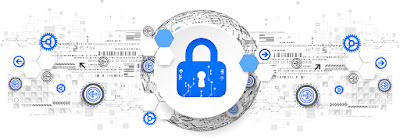HRMS Helps in Covid-19 Treatment : Strange but True
This is a case study based on an incident held in Brazil where
HRMS has played a vital role in COVID 19 Treatments.
The crisis generated by the
Coronavirus brought unprecedented impacts and challenges to the Brazilian
health system. The growing increase in demand, concentrated in a short
space of time, with no estimate of time or quantity, has made managing the
situation a constant exercise in creating scenarios.
And it was in the wake of this
creativity that HRMS
adopted the Telemedicine system whose
objective is to assist patients in Covid 19 who are being treated at home, and
the relatives of patients who are hospitalized. The objective is to
monitor the symptoms and follow the evolution of the condition.
The team, composed of 13
doctors of different specialties, is divided into two groups of work that work
from Sunday to Sunday. One group is in charge of monitoring patients and
the other family members. With telemedicine it is possible to serve
patients in isolation and those who have already undergone treatment, but still
need attention.
Remote
care, in addition to following the evolution of Covid 19, helps to reduce the
contamination curve because it prevents these people from moving from their
homes to the hospital, compromising their isolation. “As the disease is
new, there are many questions and doubts that even cause anxiety,” explains
coordinator of the Telemedicine system, Dr. Christina Fleury.
Considered
a referral hospital in the State for the treatment of Coronavirus, the
telemedicine service adds to the efforts of the HRMS team that takes care of
its patients from the entrance until their complete recovery. “Our work
goes beyond the walls of the Hospital,” explains doctor Rosana Leite de Melo,
the institution's CEO.
In
his evaluation, telemedicine makes it possible to take patients in isolation
and those who have already undergone treatment, but still needs medical
guidance so that they can, at home, have continuous monitoring and evaluation
until the end of treatment without the need to return to the hospital.
Service brings safety and comfort to
patients
From
the 8th of April, when the first Telemedicine group started until
this Thursday, 272 patients were discharged, 207 confirmed cases and 89 cases
still being monitored. The support group for family members of people
hospitalized with covid-19 attended 186 cases of discharge and currently 110
family members continue to receive telephone medical care. "Some
people even ask us to keep calling them, even after discharge, such security
provided by the team" says Dr. Christina.
In
addition to patients with a positive diagnosis for Covid 19, but without the
need for hospitalization, the first group also monitors all people who have
undergone HRMS
showing any symptoms of the disease and those who have more severe cases of flu
syndrome. This monitoring is vital, as Covid 19 can evolve from day to
day.
The
importance of tracking via HRMS
"Here
we also save lives," says one of the team's doctors, Dr. Virgílio
Gonçalves de Souza Júnior. "Our role is to monitor in the early
search for cases," he explains. It is important to clarify that when
a family member is infected, everyone in the same household is at risk of
contamination. That is why this tracking is necessary, which consists of
searching for information. Calls are made to all patients and family
members every 24 or 48 hours.
The
doctor is keen to emphasize that a large part of the population neglects the
severity of the disease and does not respect the rules of
protection. “Isolation is our main weapon in the fight against Covid 19”,
he points out. The concern increases especially when health professionals
themselves are already getting sick. “It is necessary to have sensitivity
and awareness”, he warns.
Often
the patient just needs a friendly word to feel good. So says another
member of the Telemedicine team, Dr. Leonardo Rodrigues Resende. But the
story they hear on the other end of the line is not always
positive. “There are sad cases of people who are hospitalized and cannot
say goodbye to a family member who has died; mother and daughter who are
hospitalized and only one of them is able to survive”, she
says. Therefore, in the team, doctors often play the role of
psychologists.
There
are cases of entire families hospitalized with Covid 19, explains the
coordinator of the service, Dr. Christiana. In these situations, the
person at home is very fragile. Preserving the isolation of the patient at
home is also not an easy task, according to her. “Some people cannot put
food on the table unless they leave for work”, he explains.
It
is important to clarify that the assistance provided
by Telemedicine is exclusive to answer questions and monitor patients
and family members. Doctors do not prescribe any medication. The
function is to notice any signs of change in the health of these
people. If they notice any complications in the picture, the protocol is
to send the patient to the Emergency Room where they will be seen
immediately.
The
growing demand for the telemedicine service led HRMS to decide to recruit
four medical students to help the team. “Here we only have time to get in
and we don't have time to go out,” says the coordinator, explaining that no one
leaves before making all the calls of the day made to all corners of Mato
Grosso do Sul.









